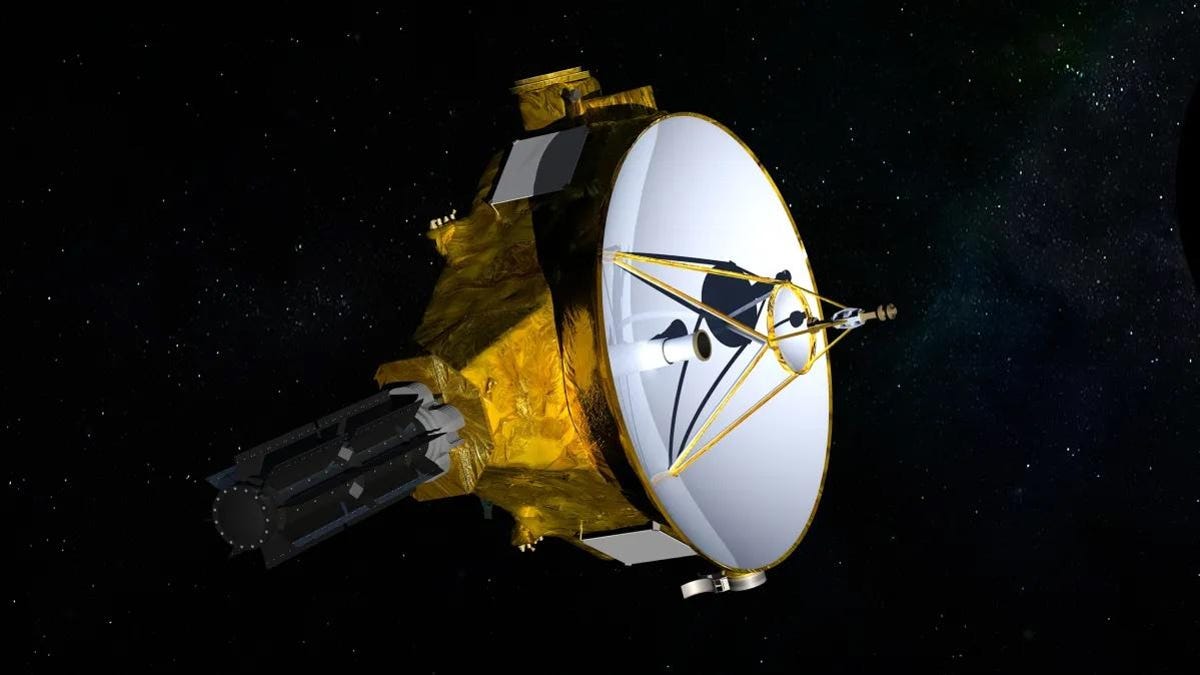
A famous NASA spacecraft will continue exploring the outer reaches of the solar system thanks to an extended lifeline. This decision overturns NASA’s earlier proposal to change the mission’s course and transfer it to a different division.
NASA has decided to extend its New Horizons mission until the spacecraft exits the Kuiper Belt, which is expected to take place as early as 2028, the space agency announced. The mission was originally scheduled to wrap up operations at the end of 2024.
Advertisement
During its bonus time in the frozen depths of the solar system, New Horizons will mainly focus on collecting heliophysics data (heliophysics is the study of the Sun and how it interacts with its surrounding environment). The spacecraft will observe the Sun in a low-power mode, but as a bonus, it will also search for an object in the Kuiper Belt to conduct a close flyby.
The decision was celebrated by the mission team, who challenged a proposal by NASA to transfer the mission from the space agency’s Planetary Science Division to the Heliophysics Division and focusing all of its efforts on the Sun. “I want to thank everyone who supported us in getting NASA to continue the exploration of the Kuiper Belt by its NASA New Horizons spacecraft,” Alan Stern, principal investigator for New Horizons, wrote on X (formerly Twitter).
Advertisement
Advertisement
New Horizons launched on January 18, 2006, and spent nearly 15 years to reach its orbital perch in the far reaches of the solar system (around 50 times farther away than Earth is from the Sun). From there, the spacecraft has been exploring the Kuiper belt, a donut-shaped ring of icy objects that extends just beyond the orbit of Neptune. This region is littered with leftovers from the early history of the solar system, and exploring it can help scientists piece together the origin story of Earth and the rest of its neighboring planets.
In January 2022, NASA put together a review panel to go over a proposal by the mission’s science team to extend it by an additional three years. The space agency decided to extend the mission for two years instead and fund New Horizons as a planetary mission until 2024, while considering funding it as a heliophysics mission beginning in 2025. The decision was met with uproar from the science community, who argued that the spacecraft’s unique position in the far stretches of the solar system allows it to observe the mysterious objects of the Kuiper Belt while also studying the Sun.
“Following a senior review and feedback from a diverse set of stakeholders, NASA will continue the NASA New Horizons mission focus on multidisciplinary science,” Nicola Fox, associate administrator of science at NASA, wrote on X.
The new, extended mission will be primarily funded by NASA’s Planetary Science Division and jointly managed by NASA’s Heliophysics and Planetary Science Divisions, the space agency wrote.
Advertisement
The Kuiper Belt is filled with hundreds of millions of objects, of which New Horizons has so far explored 37. The spacecraft was also the first to visit Pluto in July 2015, conducting the farthest flyby in history. In 2019, New Horizons visited its next flyby target, a primordial binary object that was later named Arrokoth (which is Native American for sky). The New Horizons team is currently looking for a second flyby object, and planning observations of Saturn and its moons.
For more spaceflight in your life, follow us on X (formerly Twitter) and bookmark Gizmodo’s dedicated Spaceflight page.
Services Marketplace – Listings, Bookings & Reviews